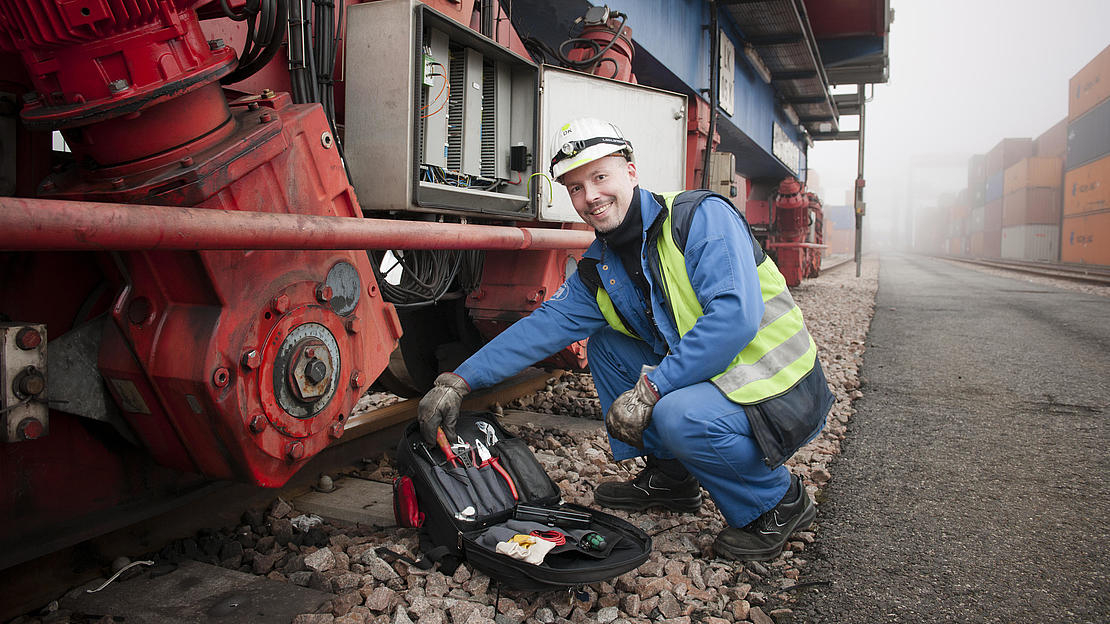
"No, nothing special happened," is how Denis Kunkel sums up his night shift. Until 7.15 a.m., he has just been on fault clearance duty to ensure that the equipment at Container Terminal Altenwerder (CTA) is rolling as planned.
Ten employees each form a shift at the mobile unit of the Service Center Altenwerder (SCA) - the terminal workshop. Work goes on around the clock - the port never sleeps. In the meantime, three women are part of the fault-clearers who go out whenever a piece of equipment fails to work at the terminal. Their most important piece of luggage is a backpack. It weighs a good 15 kilos with its various screwdrivers, pliers and hammers.
Kunkel and his colleagues usually set off in teams of two to their work sites on the grounds. For example, to a broken-down AGV (automatic guided vehicle), a defective tractor or one of the 26 pairs of cranes in the fully automatic block storage facility. It can happen that one of the two gantry cranes loses its orientation or, as Kunkel puts it, "its synchronicity". The danger here is that if one of the two cranes no longer knows where it is, it can no longer communicate with its neighbouring crane - they could collide with each other. To prevent this from happening, the troubleshooters bring the confused crane back into a synchronised position; in the best case by restarting its control system.
In the early years of the terminal - about 10 years ago - the gantry cranes lost their synchronicity more often. The reason: the first transponder generation, which the cranes used to register their position, suffered from the weather. They have optimised this in the meantime; today the gantry cranes determine their position with the help of magnets. They are more robust and less sensitive to the weather.
Solving problems with the control of machines is something of a home game for Kunkel, a trained electronics engineer and master electrician. He has been at the CTA since the first test runs in spring 2002. At that time, half of the troubleshooting teams consisted of mechanics and the other half of electronics technicians. The electronic component of the equipment on the CTA proved to be more important, so that today the electronic technicians outnumber the mechanics.
"It never gets boring," says Kunkel, "it's always more varied than in an industrial plant." His deployment orders converge in the control centre of the fault clearance service. One of the team members directs them in shifts, sends the fault clearance teams out into the wind and weather, and finally logs the operation.
Kunkel is tired at the end of his shift. He doesn't go to bed yet. First he picks up his three-year-old daughter and takes her to a children's dance class.